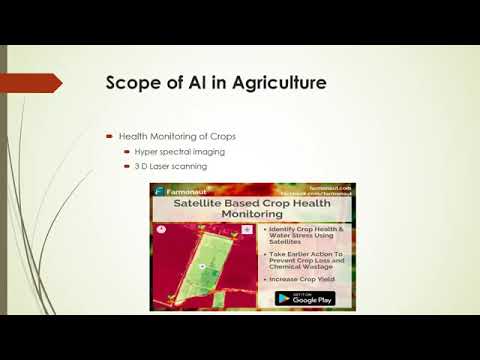Revolutionizing Australian Agriculture: How R&D Levies Drive Sustainable Farming Innovation and Profitability
“Australian grain industry R&D levies fund approximately 60% of agricultural research, driving sustainable farming innovation.”
In the vast landscapes of Australia, a quiet revolution is taking place in the agricultural sector. At the heart of this transformation are the Research and Development (R&D) levies that are reshaping the future of farming in our nation. As we delve into this critical topic, we’ll explore how these levies are not just financial contributions, but catalysts for innovation, sustainability, and increased profitability in Australian agriculture.
The Backbone of Agricultural Innovation: Understanding R&D Levies
R&D levies in Australian agriculture are more than just a funding mechanism; they represent a collective investment in the future of farming. These levies, collected from producers across various agricultural sectors, play a pivotal role in driving sustainable agriculture practices and fostering agribusiness innovation. Let’s break down the significance of these levies:
- Funding Research: R&D levies provide essential funding for cutting-edge research that addresses key challenges in agriculture.
- Driving Innovation: They enable the development of new technologies and methodologies that enhance farm productivity and efficiency.
- Promoting Sustainability: A significant portion of levy-funded research focuses on developing sustainable farming methods.
- Enhancing Competitiveness: By funding marketing initiatives, levies help Australian agricultural products stand out in global markets.
The impact of these levies extends far beyond individual farms, contributing to the overall growth and resilience of the Australian agricultural sector.

The Australian Grain Industry: A Case Study in Levy-Driven Success
The Australian grain industry serves as a prime example of how R&D levies can transform a sector. Here’s how levies have revolutionized grain farming:
- Improved Crop Varieties: Levy-funded research has led to the development of drought-resistant and high-yield grain varieties.
- Advanced Farming Techniques: Precision agriculture methods, developed through levy-funded research, have optimized resource use.
- Market Expansion: Marketing levies have helped Australian grain products gain recognition and market share globally.
- Sustainability Initiatives: Research into sustainable farming practices has reduced the environmental footprint of grain production.
These advancements have not only increased productivity but also enhanced the sustainability and profitability of grain farming in Australia.
The Role of Technology in Leveraging R&D Levy Benefits
In the era of digital agriculture, technology plays a crucial role in maximizing the benefits of R&D levies. Agtech solutions like those offered by Farmonaut are at the forefront of this technological revolution. Our satellite-based farm management solutions complement the research funded by R&D levies, providing farmers with tools to implement innovative practices effectively.
For instance, Farmonaut’s real-time crop health monitoring system helps farmers apply research findings on optimal crop management in real-world conditions. This synergy between R&D and technology accelerates the adoption of sustainable and profitable farming practices.
Explore Farmonaut’s innovative solutions:
The Impact of R&D Levies on Farm Profitability
One of the most significant outcomes of R&D levies is their positive impact on farm profitability strategies. By funding research into more efficient farming methods, levies contribute to:
- Reduced Input Costs: Research into precision agriculture techniques helps farmers optimize resource use.
- Increased Yields: Improved crop varieties and farming practices lead to higher yields per hectare.
- Better Risk Management: Research into pest control and disease resistance helps mitigate farming risks.
- Market Access: Marketing levies help open new markets, increasing demand for Australian agricultural products.
These factors combine to create a more resilient and profitable agricultural sector, benefiting individual farmers and the national economy alike.
Sustainability: A Key Focus of Levy-Funded Research
Sustainable agriculture practices are at the forefront of levy-funded research initiatives. This focus on sustainability is crucial for several reasons:
- Environmental Stewardship: Research into sustainable practices helps reduce agriculture’s environmental impact.
- Long-term Viability: Sustainable methods ensure the long-term productivity of agricultural land.
- Consumer Demand: Meeting growing consumer demand for sustainably produced food.
- Climate Resilience: Developing farming techniques that are resilient to climate change impacts.
By prioritizing sustainability, R&D levies are helping to secure the future of Australian agriculture in an environmentally conscious world.

The Role of Policy in Shaping R&D Levy Structures
Agricultural policy development plays a crucial role in shaping the structure and implementation of R&D levies. Key aspects of policy influence include:
- Levy Rates: Policies determine the appropriate levy rates for different agricultural sectors.
- Fund Allocation: Guidelines for how levy funds are distributed among various research priorities.
- Governance Structures: Establishing transparent and efficient systems for managing levy funds.
- Stakeholder Engagement: Ensuring that farmers and industry bodies have a voice in levy decisions.
Effective policies ensure that R&D levies are fair, transparent, and aligned with the needs of the agricultural sector.
“Women make up nearly 32% of Australia’s agricultural workforce, contributing significantly to rural development and farm profitability.”
Empowering Rural Women in Agriculture Through R&D Levies
R&D levies are also playing a crucial role in empowering rural women in agriculture. This focus is essential for several reasons:
- Diverse Perspectives: Including women’s voices in research priorities brings diverse insights to agricultural innovation.
- Targeted Research: Addressing specific challenges faced by women farmers through dedicated research programs.
- Skill Development: Funding training programs that enhance women’s skills in modern farming techniques.
- Leadership Opportunities: Supporting initiatives that promote women’s leadership in agricultural organizations.
By promoting gender equality in agriculture, R&D levies are helping to unlock the full potential of Australia’s farming community.
The Future of Agricultural R&D Funding in Australia
As we look to the future, the landscape of agricultural R&D funding in Australia is evolving. Key trends and considerations include:
- Public-Private Partnerships: Increasing collaboration between government-funded research and private sector innovation.
- International Collaboration: Expanding research partnerships with global agricultural institutions.
- Focus on Climate Adaptation: Prioritizing research that helps Australian agriculture adapt to changing climate conditions.
- Digital Agriculture: Increasing investment in digital technologies and data-driven farming solutions.
These trends highlight the dynamic nature of agricultural research and the need for flexible, forward-thinking levy structures.
Challenges and Opportunities in the R&D Levy System
While R&D levies have brought significant benefits to Australian agriculture, the system also faces challenges:
- Ensuring Equitable Benefits: Making sure that levy benefits reach all farmers, regardless of size or location.
- Balancing Short-term and Long-term Research: Striking the right balance between immediate needs and long-term innovation.
- Adapting to Technological Changes: Keeping pace with rapidly evolving agricultural technologies.
- Measuring Impact: Developing better methods to quantify the return on investment from levy-funded research.
Addressing these challenges will be crucial for the continued success of the R&D levy system in Australian agriculture.
The Role of Agtech in Complementing R&D Levy Initiatives
Agtech solutions, like those offered by Farmonaut, play a vital role in complementing and enhancing the impact of R&D levy initiatives. Here’s how:
- Data-Driven Decision Making: Our satellite-based monitoring provides farmers with real-time data to implement research findings effectively.
- Precision Agriculture: Farmonaut’s tools enable precise application of levy-funded research in areas like crop management and resource optimization.
- Sustainability Tracking: Our technology helps farmers track and improve their sustainability metrics, aligning with levy-funded sustainability research.
- Accessibility: By making advanced agricultural technologies accessible, we help bridge the gap between research and on-farm implementation.
For more information on how Farmonaut’s solutions can enhance your farming practices, visit our API Developer Docs.
Australian Agricultural R&D Levy Impact Analysis
| Agricultural Sector | Annual R&D Levy Amount (AUD) | Key Research Areas Funded | Estimated Productivity Increase (%) | Sustainable Practices Adopted | Economic Impact (AUD) |
|---|---|---|---|---|---|
| Grains | 120 million | Drought-resistant varieties, Precision agriculture | 15% | Water-efficient farming, Soil health management | 1.2 billion |
| Horticulture | 100 million | Pest management, Post-harvest technology | 12% | Integrated pest management, Biodiversity conservation | 800 million |
| Livestock | 80 million | Animal welfare, Pasture improvement | 10% | Rotational grazing, Methane reduction strategies | 950 million |
| Cotton | 22 million | Water use efficiency, Fiber quality | 18% | Precision irrigation, Integrated pest management | 400 million |
| Dairy | 55 million | Milk quality, Feed efficiency | 8% | Sustainable effluent management, Carbon footprint reduction | 600 million |
This table illustrates the significant impact of R&D levies across various agricultural sectors in Australia. It’s clear that these investments are driving substantial productivity increases and fostering the adoption of sustainable practices, resulting in considerable economic benefits.
The Global Context: Australia’s R&D Levies in Comparison
Australia’s R&D levy system is unique in many ways, but it’s important to consider it in a global context:
- International Competitiveness: R&D levies help keep Australian agriculture competitive on the global stage.
- Knowledge Exchange: The system facilitates international research collaborations and knowledge sharing.
- Adaptation of Global Innovations: Levy-funded research often focuses on adapting global agricultural innovations to Australian conditions.
- Export Market Development: Marketing levies play a crucial role in promoting Australian agricultural products internationally.
By benchmarking against global best practices, Australia’s R&D levy system continues to evolve and improve.
The Role of Farmer Engagement in R&D Levy Success
The success of the R&D levy system heavily depends on farmer engagement and support. Key aspects include:
- Transparency: Ensuring clear communication about how levy funds are used and their impact.
- Farmer Input: Involving farmers in setting research priorities and evaluating outcomes.
- Education and Outreach: Providing farmers with accessible information about research findings and their practical applications.
- Feedback Mechanisms: Establishing channels for farmers to provide feedback on levy-funded initiatives.
By fostering a sense of ownership and involvement among farmers, the R&D levy system can better align with the needs of the agricultural community.
Conclusion: The Path Forward for Australian Agriculture
As we’ve explored throughout this article, R&D levies are playing a pivotal role in shaping the future of Australian agriculture. By driving innovation, promoting sustainability, and enhancing profitability, these levies are helping to create a more resilient and competitive agricultural sector.
The challenges ahead are significant, from adapting to climate change to meeting growing global food demand. However, with continued investment in research and development, coupled with the adoption of advanced technologies like those offered by Farmonaut, Australian agriculture is well-positioned to meet these challenges head-on.
As we move forward, the collaboration between farmers, researchers, policymakers, and technology providers will be crucial in maximizing the benefits of R&D levies. By working together, we can ensure that Australian agriculture remains at the forefront of innovation, sustainability, and productivity on the global stage.
FAQ Section
- What are R&D levies in Australian agriculture?
R&D levies are funds collected from agricultural producers to finance research, development, and marketing initiatives that benefit the industry as a whole. - How do R&D levies benefit Australian farmers?
They fund research into improved farming practices, develop new crop varieties, support marketing efforts, and drive innovation in the agricultural sector. - Are R&D levies mandatory for all farmers?
Generally, yes. Most primary producers are required to pay levies, but the specifics can vary by agricultural sector. - How are R&D levy rates determined?
Rates are typically set through consultation between industry bodies, government agencies, and farmer representatives. - Can farmers influence how R&D levy funds are used?
Yes, farmers can provide input through industry bodies and participate in surveys and consultations about research priorities. - How do R&D levies contribute to sustainable farming?
They fund research into sustainable practices, resource management, and environmentally friendly farming techniques. - What role do agtech companies like Farmonaut play in the R&D levy system?
Agtech companies complement levy-funded research by providing tools and technologies that help implement research findings on the farm. - How are the impacts of R&D levies measured?
Through various metrics including productivity increases, adoption rates of new technologies, and economic impact assessments. - Can R&D levies help small-scale farmers?
Yes, by funding research and technologies that can be applied across farms of all sizes, and by supporting marketing efforts that benefit the entire industry. - How do R&D levies in Australia compare to similar systems globally?
Australia’s system is well-regarded internationally for its focus on industry-driven research and strong collaboration between farmers, researchers, and government.




















